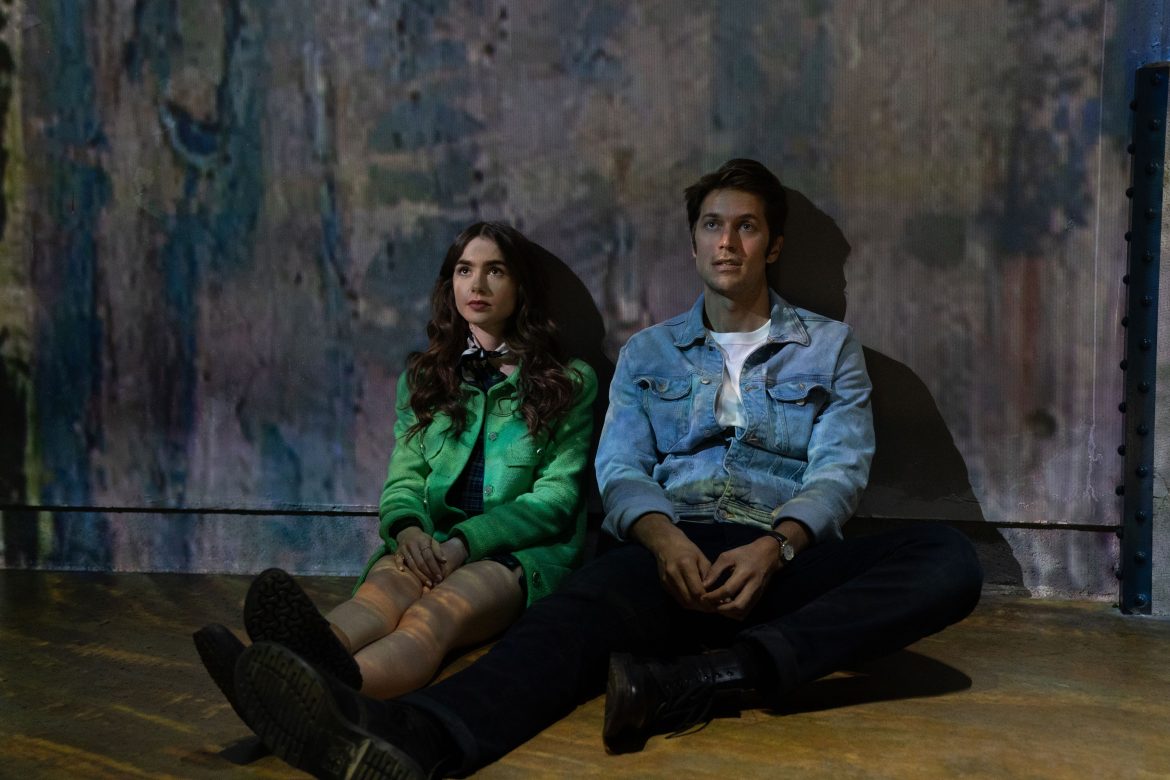With Emily in Paris making a splash on Instagram, some of us found ourselves determined to resist the temptation to watch it. But I succumbed.
The series revolves around Emily Cooper, a twenty-something American girl from Chicago who works in a marketing firm. By a twist of fate, she lands a dream job in Paris.
Her boss was originally supposed to take the job and move to Paris to integrate an American perspective into the company’s French branch. But she suddenly realises she is pregnant, just days before her flight to Paris.
Emily takes up the challenge instead, and, leaving her long-term boyfriend and comfortable life behind, ventures to Paris. Is this a heaven-sent chance, or will her lack of knowledge of the French language and culture, as well as being at the receiving end of their arrogance, prove disastrous?
From the beginning of the series, what is most gripping is its nostalgic aesthetic: there is a real appreciation of beauty.
From the very first scene, Lily Collins, playing protagonist Emily, pulls out all the stops, sashaying down the squeaky clean streets (except for dog poo) of the Fifth arrondissement of Paris.
A raft of reviews panned the director, Darren Star, for dressing Emily in such kitschy frocks. The fashionistas could not tolerate the sight of gauzy fuchsia mixed with psychedelic emerald green in one outfit.
It would be fair to argue, however, that the style team’s enthusiasm makes a refreshing change from minimalism. The exuberance of her clothes was entirely matched by the giddiness of her personality.
Too rosy and lazy?
The most jarring downside is the lazy choice of soundtracks. The series is interspersed with “glocalised” music, rather than quintessentially French soundtracks.
For example, take Sinatra’s song These Boots Are Made For Walking, featured in the third episode. In a bid to give it a French feel, the creators settled for a quick fix. They featured its French-language rendition, and the tokenism mission was accomplished.
This show is clearly divorced from reality, evocative of a rendition of Marie Claire magazine. The unrealistic rose-tinted scenarios – such as the guy from the floor below being ‘the one’ for Emily – abound.
Indeed, there is no shortage of stock scenarios from TV Tropes here. What are the chances of befriending a girl who turns out to be your crush’s fiancée? Seems like all the Sex in the City clichés rolled into 45 mins of each episode.
The technical elements are superb. The Emily in Paris project is a vivid backlash of on-screen aesthetics, airbrushed and heavy on colour-augmentation. While the trend in recent years has been favouring monochrome movies (Moonlight or Shape of Water), Emily in Paris, in contrast, is all about colour.
Just like Sofia Coppola‘s Maria Antionette disarmed the critics with its magical realism techniques and visual elements, so too Emily in Paris was lauded for its visual aspect. Both entail a synaesthetic experience – that is, they stimulate multiple senses. So you don’t simply watch this series, you relish it as though you are eating macarons and sipping champagne.
More than meets the eye
The series lacks sophistication, it’s a lightweight watch. The dialogue is featherweight and tongue-in-cheek.
Amid the opulence, a feminist theme attempts to shine through. When Emily locks horns with Antoine Lambert, the central fashion pundit on-scene, she comes off as a typical graduate of media studies, name-dropping Deleuze and Kristeva. She is well-versed in the male gaze theory.
But is this theory-based feminism not just a sham? Her personality is much more complex. It is in limbo between being an unflinching feminist – which symbolises and dictates her ‘American perspective’ – and the girly-girl that gravitates to classical love affairs.
Could this contradiction between her Barbie-ish looks and her feminist rhetoric hint that her inner self is craving for the male gaze she professes to despise? It would seem so, given that the denouement is Emily’s precarious yet longed-for union with Gabriel, her crush.
Ultimately, the show only pays lip-service to feminism. But this plays into the show’s favour.
It could, in fact, serve to reveal how heavily some women are influenced by feminism despite their natural aversion to it. The series shows how women crave the familiar Disney-like scenario where the female protagonist emerges as a damsel-in-distress, whatever her feminist façade.
Twenty years ago this would have been deemed stereotypical, but now the reverse may hold true: it is actually a suppressed voice of women longing for femininity who are not eager to embrace feminism.
Emily bends over backwards to retain the feminist façade but she relents. “If your only true joy is your job, maybe you never actually lived!” as her colleague Luc says.
Stereotypes or morale of the story?
Both sides, the French and the American, get their equal share of culture-jamming in this Netflix series.
There are a smattering of stereotypes throughout. Along the lines of French people too stingy to afford the luxury of showers and a smack of American centrism too. But some of these stereotypes ring true. The scenes of chef Gabrielle spurning washing greasy pans so as not to disturb the “seasoning” layer, or Sylvie, Emily’s boss, choosing a cigarette over a dessert, are perfect illustrations of this.
But it also pokes fun at Americans’ obsession with a healthy lifestyle. First, there is the smoking – a social sin in the US, but happy in the hands of a French woman.
And Sylvie’s choice of a balanced lifestyle is contrasted with that of Emily. No sooner is Emily done with her daily jogging that she veers off to a boulangerie, and bang goes her burnt calories! Totally vexing.
The series captures the quirkiest aspects of both cultures. For the French side, it is overindulgence and fickleness in love affairs. For the American “hicks” it is their parochial “live to work” ethics and jejune delayed gratification.
It is truly arresting to see how the American and French perspectives converge and clash. Admittedly, Emily In Paris is light, salacious, stereotypical, and ostentatious, but beneath the glamour lie darker psychological intricacies. The combination makes it irresistible.






